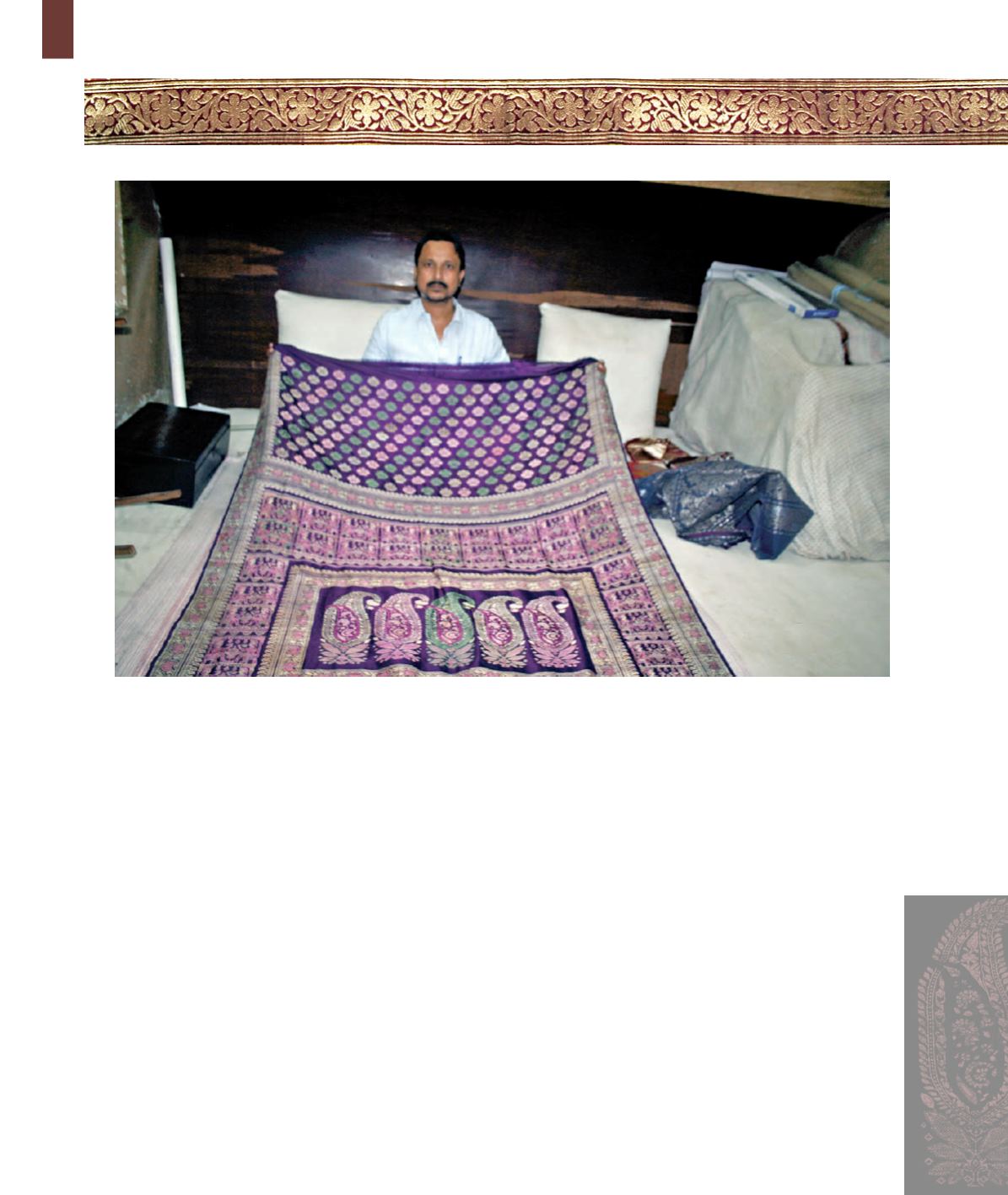
98
the same but there is a difference. The old
traditional methods are revived periodically in
which some succeed and some fail.
In the olden times, Japan had a lot of looms.
Even in England there were looms. But today,
the power looms have taken over. These
countries tried to copy the Kadhua
designs
with synthetic yarns in power looms, but it was
not successful due to the high cost. Textiles
which can be prepared in handlooms with less
cost and minimum resources are impossible
to achieve by power looms. The weaving in
handloom is slow. People today have no time
and thus they are dependent on machines.
There is a lot of competition too. Banarasi
sarees woven on handlooms are unique and
have zero defect. They are also environment-
friendly. We try to use old weaves but due to
new yarns, there is change in the texture, colour
and look for the finished weave as the new
yarns are brightly coloured and shiny. An exact
replica can be achieved by the old yarns only
because old yarns had a softness and elegance
to them.
Unfortunately, replicas of old Banarasi sarees
are made on power looms which cost less, and
these are purchased by customers. Then there
are some weavers who weave with synthetic
yarns and pass the sarees off as authentic
Banarasi sarees thus giving the community a
bad name. As a result some clients, who can
afford authentic Banarasi sarees buy them from
well-known designers who work with weavers
in Banaras. In this case, while the weaver is
getting work, a chunk of the benefit is going to
the designer.


